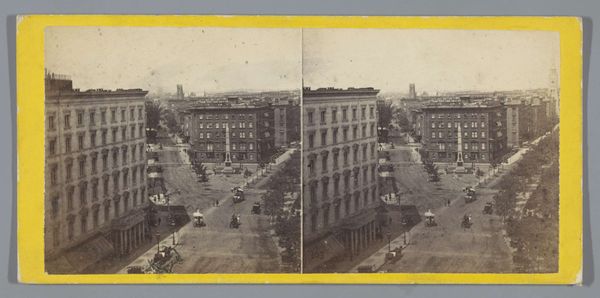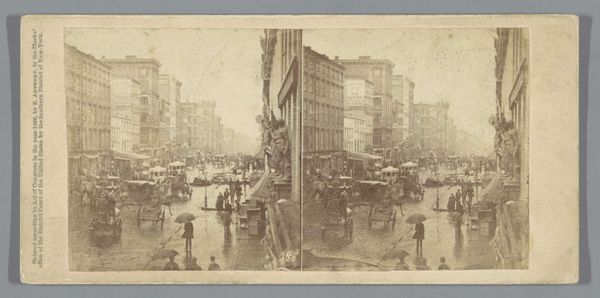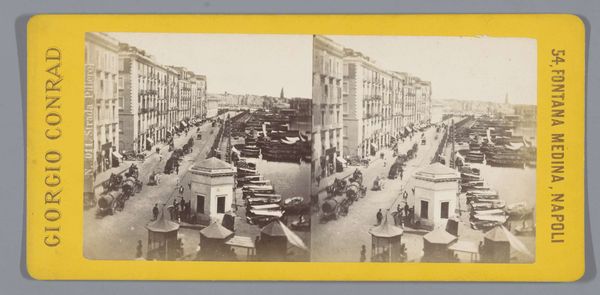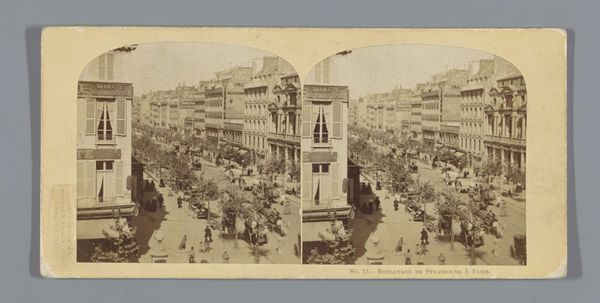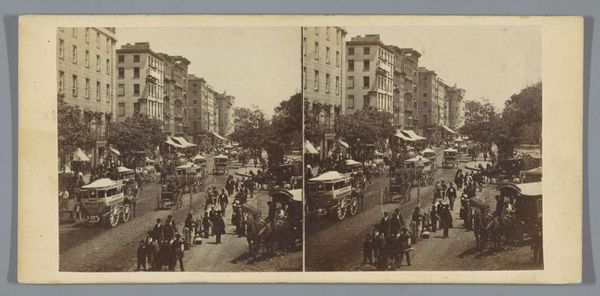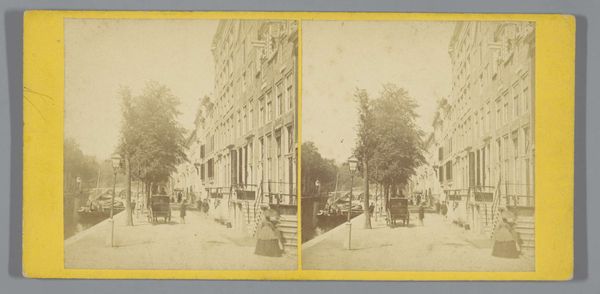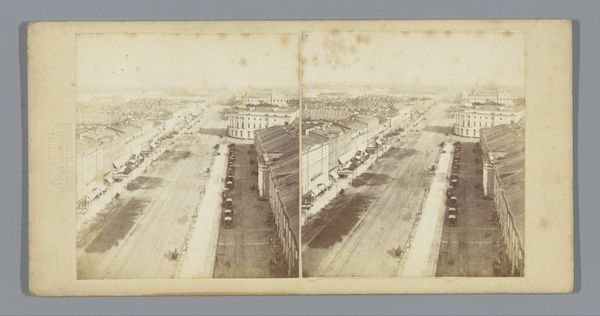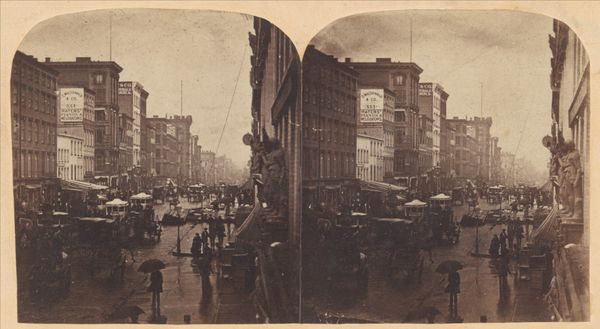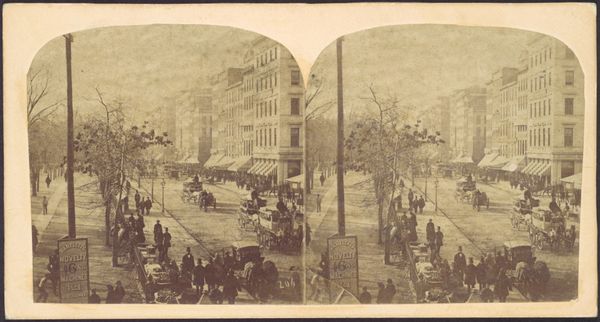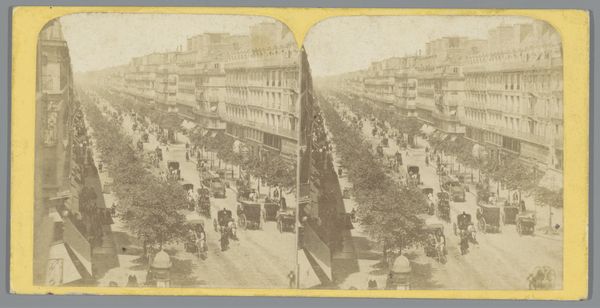
photography, gelatin-silver-print
#
photography
#
gelatin-silver-print
#
hudson-river-school
#
cityscape
#
street
Dimensions: height 82 mm, width 170 mm
Copyright: Rijks Museum: Open Domain
Editor: Here we have an interesting cityscape, “Hudson Street, gezien vanaf de kruising met Chambers Street, New York," taken sometime between 1861 and 1871. It's a gelatin silver print by an anonymous artist. It captures a bustling city street. What strikes me most is the incredible detail, almost like I'm peering into the past. How do you interpret this work through a materialist lens? Curator: What draws my attention immediately are the processes ingrained within this image. Look at the “American Express Building” and “John T. Martin Clothing” signs dominating the skyline. This photograph is not simply a neutral recording of reality, but a document of early capitalist structures taking hold. What’s the material cost of creating such grand architecture and such visible, widespread advertisement? Editor: I see what you mean. So, the choice of gelatin silver print itself – what does that say about the photograph’s materiality? Curator: Exactly. The gelatin silver process, relatively new at the time, allowed for mass production and dissemination of images. This availability reshaped not only artistic practice, but also societal memory and consumer habits. It also required skilled labor in its production – photographers, developers, and printers – all part of the chain of image-making in the 19th century. It opens to the idea that technology enables both progress and potential forms of exploitation. How did viewing the materials in that sense shape your view of the art? Editor: I now consider how each component—the architecture, the transportation, the photography itself—contributes to a layered representation of 19th-century labor, and its evolution through materialism. Thanks, it gave me much to think about. Curator: Indeed, understanding art through a material lens offers powerful insights into production and power dynamics present and past.
Comments
No comments
Be the first to comment and join the conversation on the ultimate creative platform.
